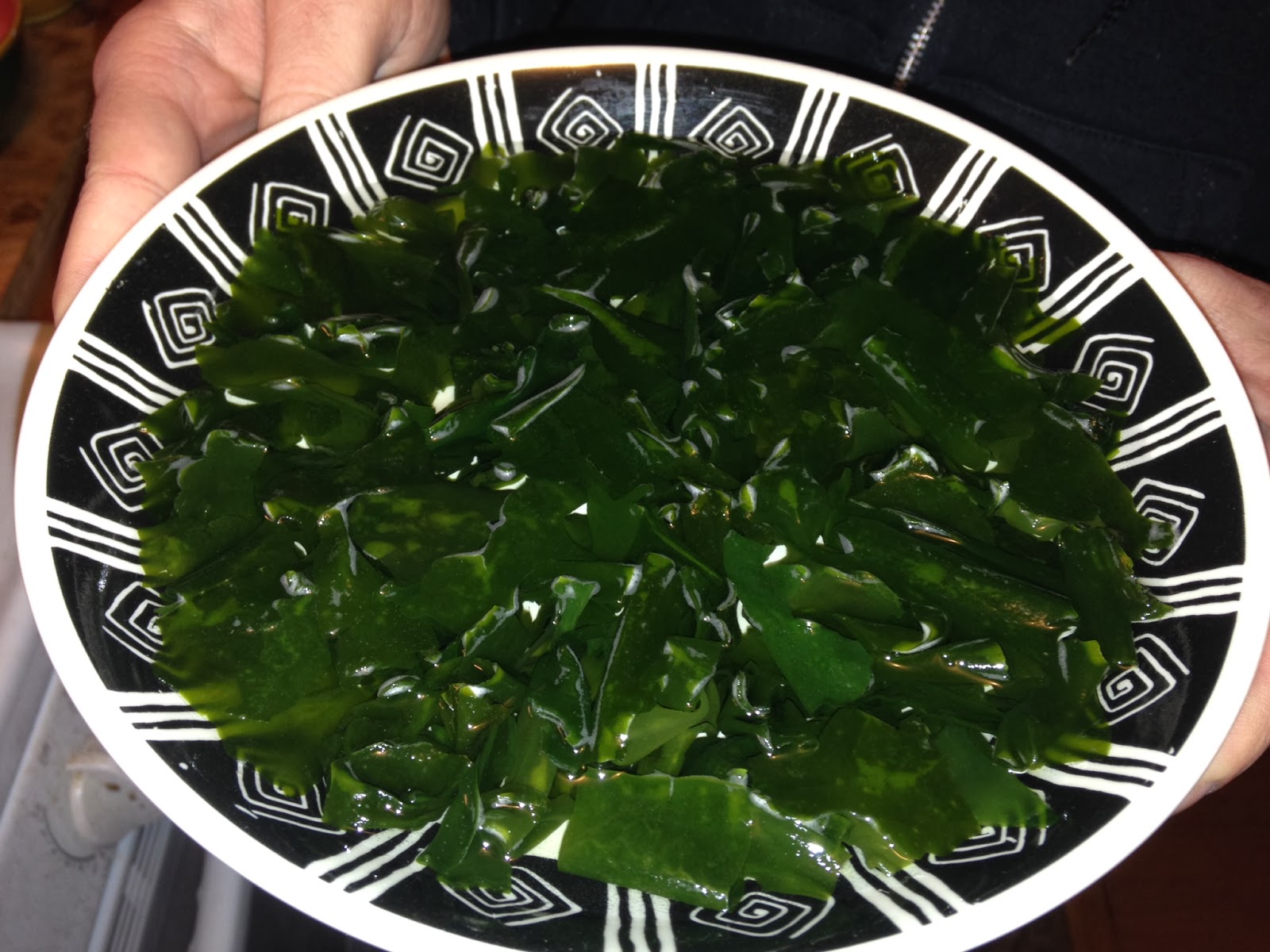 |
| Miso paste. |
Miso is a traditional Japanese seasoning with origins in Neolithic Japan. It is traditionally made from fermenting rice, barley, and/or soybeans with salt and some kind of Japanese fungus. Miso is now made from a variety of ingredients - the Whole Foods where we bought our paste also has chickpea miso - although the soybean based one is the most common. The finished product is a thick paste that can be used in a variety of dishes, although the soup seems to be the most popular use of miso in the western world. Wikipedia has a good synopsis here.
 |
| Wakame seaweed before soaking it - it kind of looks like tea. |
Miso is served both cooked and raw, although cooking it too much kills some of the beneficial microorganisms that live in the paste. That makes the soup a dish that comes together quickly - everything needs to be prepared and cooked ahead of time and then the ingredients are plopped into the broth at right before serving. The wakame seaweed needs to soak in cold water for 5-10 minutes before it is ready, the soba noodles are cooked ahead of time, and all of the veggies are chopped and ready to go.
 |
| Wakame seaweed after a 10 minute soak. CRAZY. |
Anyway, so miso soup is actually pretty simple, and completely customizable. We used the recipe here as our base, and adjusted it to fit our taste. We picked up a barley-based miso for the broth based and wakame seaweed, baby corn, spinach, tofu, green onion, celery, and soba noodles for the rest of the soup. We eyeballed how much of everything to add, and recommend that you do the same (which is why I don't have much guidance below in the recipe section).
 |
| Soup fixins |
The trickiest part is actually mixing the miso paste with the water to make the broth. As soon as the water boils, blend a little into the miso paste rather than going the other way around. The paste stays pretty paste-y, and I think it would be difficult to try to properly mix the paste into a pot of formerly-boiling water.
 |
| And the finished product. "Yum!" says Matt. |
It certainly tastes more delicious and complex than the miso soup that you make out of a packet, or for that matter, much of the stuff that you get at Japanese restaurants. Part of that was all the add-ins, but I think part of it was also the miso paste we used. We used a red miso, which is generally aged longer than white miso (which seems to be the standard one) and thus has a stronger, more pungent flavor. Matt gobbled his up and is looking forward to the leftovers for lunch tomorrow. I liked it, but wouldn't make it if Matt wasn't here.
Basic Miso Soup
4 cups water
3ish Tbsp miso paste
soba noodles, cooked and divided amongst serving bowls
firm tofu, cut into small cubes
2 green onions, sliced
handful of baby spinach
1 stalk celery, sliced
1 1/2 Tbsp wakame seaweed, soaked for 10 minutes and then drained
a few ears baby corn, coarsely chopped
Prepare all ingredients other than water and miso. Bring water to a boil. Put miso paste in a medium bowl. Once the water boils, reduce heat to simmer, and add about 1/2 cup to the miso paste and stir with a fork until well mixed. Add mixture back to hot water, and add tofu and seaweed. Once tofu is warm, ladle mixture into serving bowls with soba. Add remaining ingredients on top, serve at once.
Makes 3-4 servings.
No comments:
Post a Comment